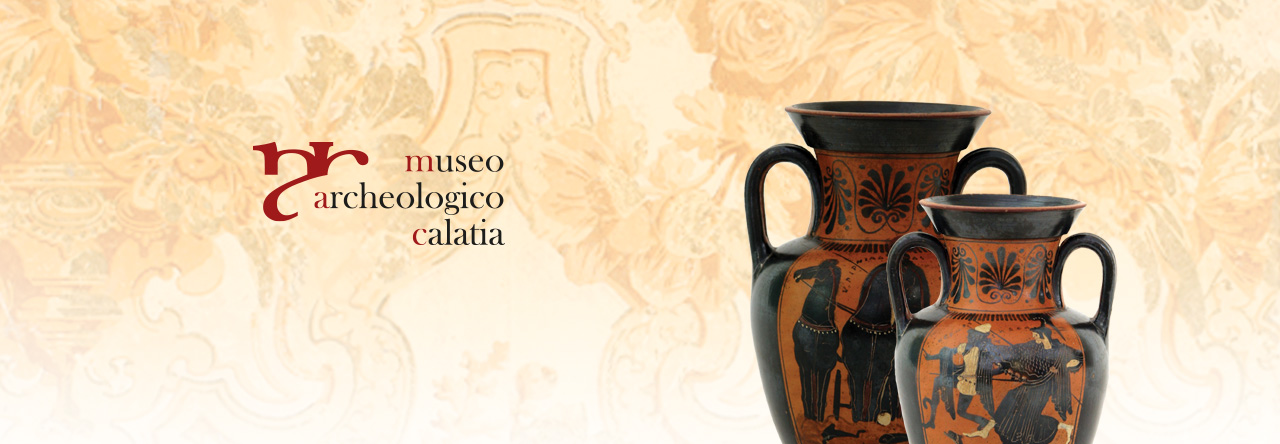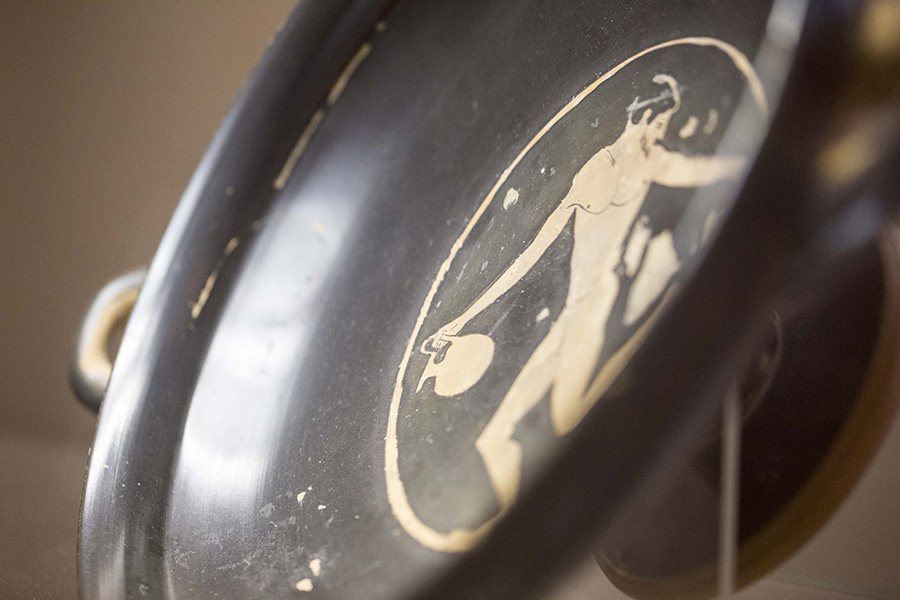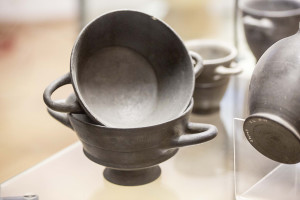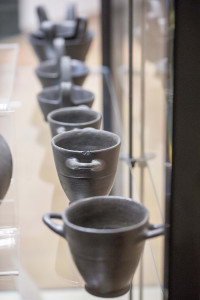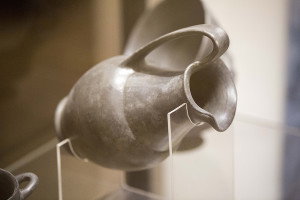Starting from the back of Room 5 you can find the funerary objects in chronological order. In the room corresponding to one of the tower of the building, archaeologists recreated one of the fewest cremation tombs that were discovered in the necropolis of Calatia, dating back to the late VII century BC. The ashes of the deceased were in a bronze bowl placed in the middle of the showcase. The cremation rite comes from the Greek world – on the back wall there are some passages from Hector’s funeral, which Homer describes in detail in the Iliad.
In the oldest burials from the late VIII century BC (showcase 10 and 9), which belonged to men of high rank, you can find local (shelf 2) but also Greek pottery that was brought to the inner cities thanks to the Greek colonisation on the coasts of Campania (shelf 1). On the lower shelves of the showcases there are metal tools and utensils belonging to the deceased which refer to his job and to the funerary banquet – an example are spits and pincers from no. 194 grave.
There is evidence of women’s funeral custom thanks to the graves dating back to the VII century BC, which can be found in showcases 8 and 9. The personal ornamentation is made up of bronze fibulae with amber and bone decorations, bracelets and necklaces created in glass (shelf 1). Next to ceramic crockery (shelf 3), there is the Etruscan-Corinthian pottery imported from the Central-Southern Etruria and then produced in Campania. In the VII century bucchero gradually replaces clay ceramics and it is soon produced in Campania, too (showcase 8, shelf 2).
(Room 4) From the late VI and the early V century BC, the funerary objects consist of a few Attic pottery vases. In Calatia, thanks to the influence of the Etruscan Capua, simplification and splendour are symbols of the presence of tastes and trends from the Hellenistic culture (showcase 7).
In the early IV century BC, there is an increase in the imitation of Attic vases painted with red figures, which characterise the burials in this period (showcase 6); figurative elements are standardised and they are linked to the funerary motif.
Until the mid-I century AD, cremation is the main rite of Roman times. Ashes and remains of the funerary bed are together in the cinerary. In showcase 5 it is possible to see a bed leg with a burnt bone decoration. The funerary objects are glass and ceramic unguentaries and personal items.
This is the end of the visit on the ground floor.
continue the visit First floor


 Italiano
Italiano Français
Français Español
Español Deutsch
Deutsch